This article is mirrored from the main the ESA Web Portal.
You can also watch a replay of the Google+ Hangout with Rosetta mission experts that was broadcast on 13 August 2015.
ESA’s Rosetta today witnessed Comet 67P/Churyumov–Gerasimenko making its closest approach to the Sun. The exact moment of perihelion occurred at 02:03 GMT this morning when the comet came within 186 million km of the Sun.
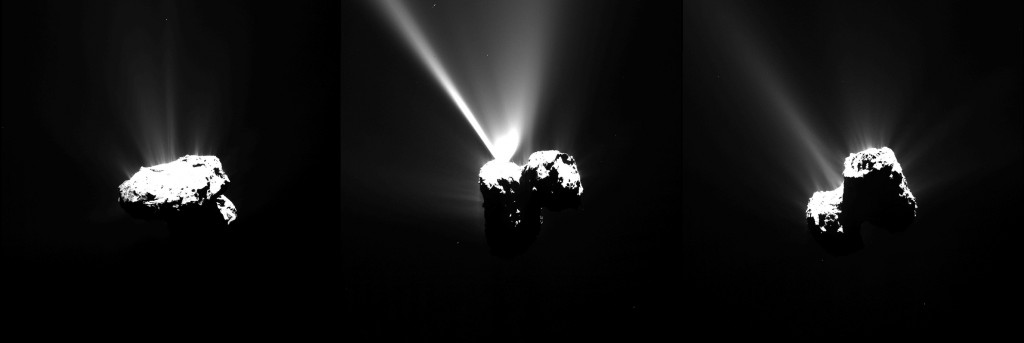
Images of Comet 67P/C-G taken with OSIRIS narrow-angle camera on 12 August 2015, just a few hours before the comet reached perihelion, about 330 km from the comet. The individual images are also available below. Credits: ESA/Rosetta/MPS for OSIRIS Team MPS/UPD/LAM/IAA/SSO/INTA/UPM/DASP/IDA
In the year that has passed since Rosetta arrived, the comet has travelled some 750 million kilometres along its orbit towards the Sun, the increasing solar radiation heating up the nucleus and causing its frozen ices to escape as gas and stream out into space at an ever greater rate. These gases, and the dust particles that they drag along, build up the comet’s atmosphere – coma – and tail.
The activity reaches its peak intensity around perihelion and in the weeks that follow – and is clearly visible in the spectacular images returned by the spacecraft in the last months. One image taken by Rosetta’s navigation camera was acquired at 01:04 GMT, just an hour before the moment of perihelion, from a distance of around 327 km.
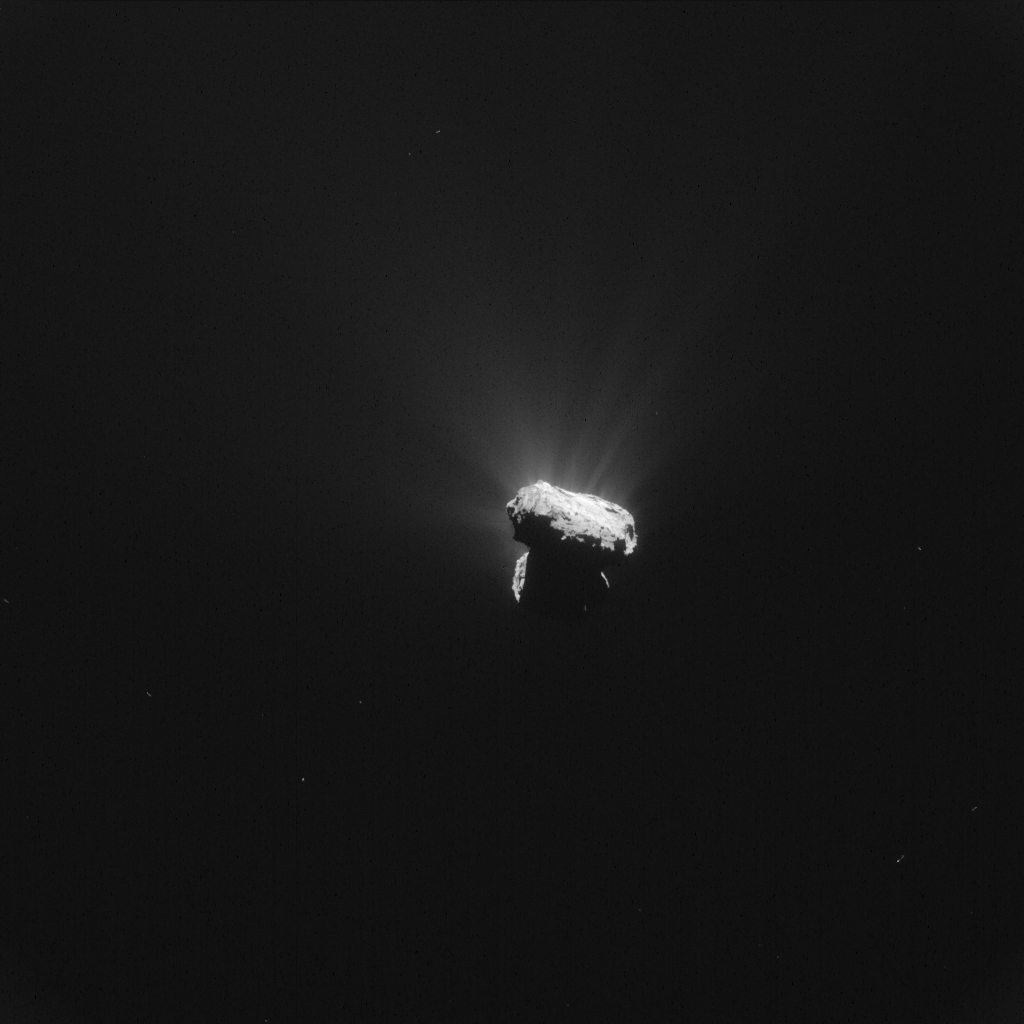
Single frame NAVCAM image of the comet at 01:04 GMT on 13 August 2015, just one hour before perihelion. The image was taken around 327 km from the comet. It has a resolution of 28 m/pixel, measures 28.6 km across and was processed to bring out the details of the comet’s activity. Credits: ESA/Rosetta/NAVCAM – CC BY-SA IGO 3.0
The scientific camera is also taking images today – the most recent available image was taken at 23:31 GMT on 12 August, just a few hours before perihelion. The comet’s activity is clearly seen in the images, with a multitude of jets stemming from the nucleus, including one outburst captured in an image taken at 17:35 GMT yesterday.
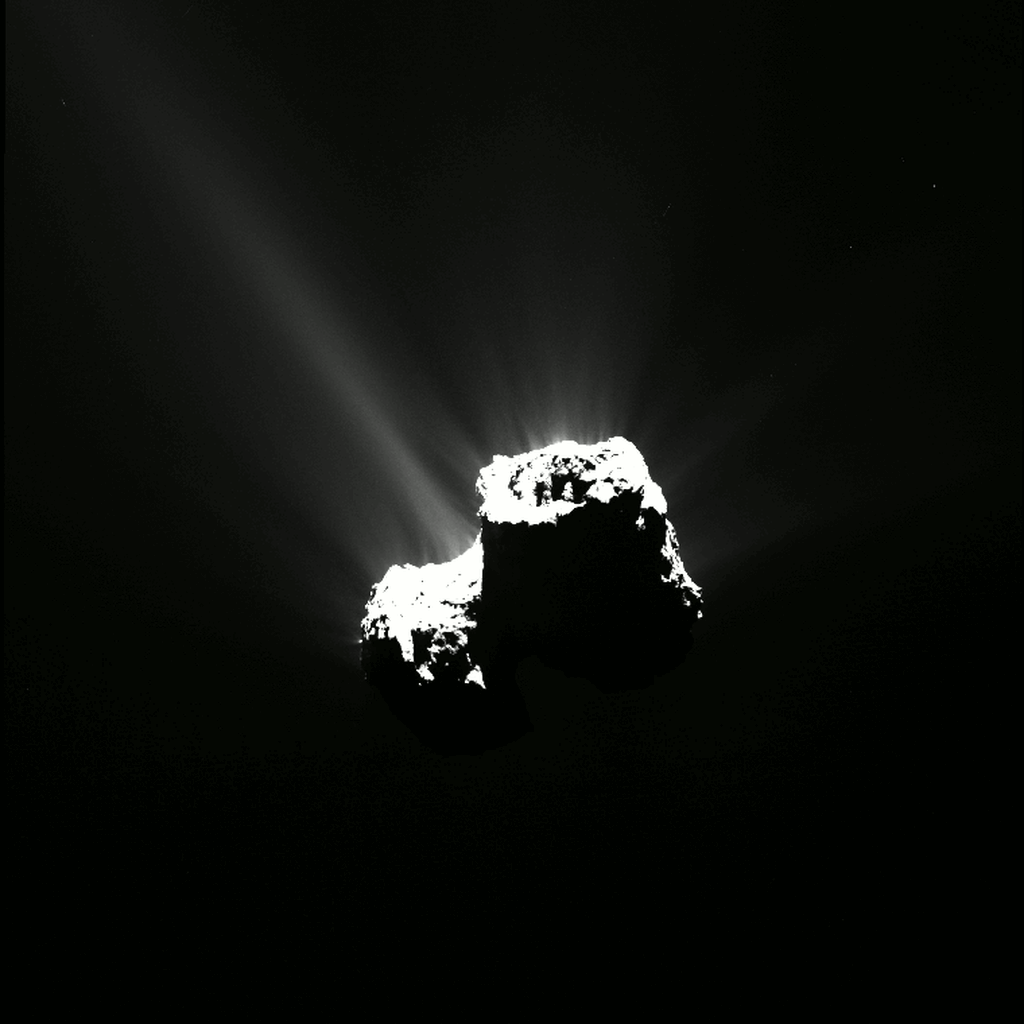
Sequence of OSIRIS narrow-angle camera images from 12 August 2015, just a few hours before the comet reached perihelion. Credits: ESA/Rosetta/MPS for OSIRIS Team MPS/UPD/LAM/IAA/SSO/INTA/UPM/DASP/IDA
“Activity will remain high like this for many weeks, and we’re certainly looking forward to seeing how many more jets and outburst events we catch in the act, as we have already witnessed in the last few weeks,” says Nicolas Altobelli, acting Rosetta project scientist.
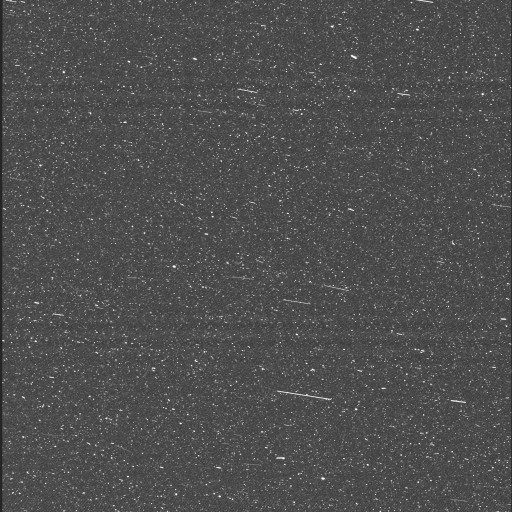
The dust environment around the comet, providing a the challenging environment for the spacecraft to operate. Images captured on 6 July 2015 with the OSIRIS wide-angle camera. (Click through to see the full animated .gif). Credit: ESA/Rosetta/MPS for OSIRIS Team MPS/UPD/LAM/IAA/SSO/INTA/UPM/DASP/IDA
Rosetta’s measurements suggest the comet is spewing up to 300 kg of water vapour – roughly the equivalent of two bathtubs – every second. This is a thousand times more than was observed this time last year when Rosetta first approached the comet. Then, it recorded an outflow rate of just 300 g per second, equivalent to two small glasses of water.
Along with gas, the nucleus is also estimated to be shedding up to 1000 kg of dust per second, creating dangerous working conditions for Rosetta.
“In recent days, we have been forced to move even further away from the comet. We’re currently at a distance of between 325 km and 340 km this week, in a region where Rosetta’s startrackers can operate without being confused by excessive dust levels – without them working properly, Rosetta can’t position itself in space,” comments Sylvain Lodiot, ESA’s spacecraft operations manager.
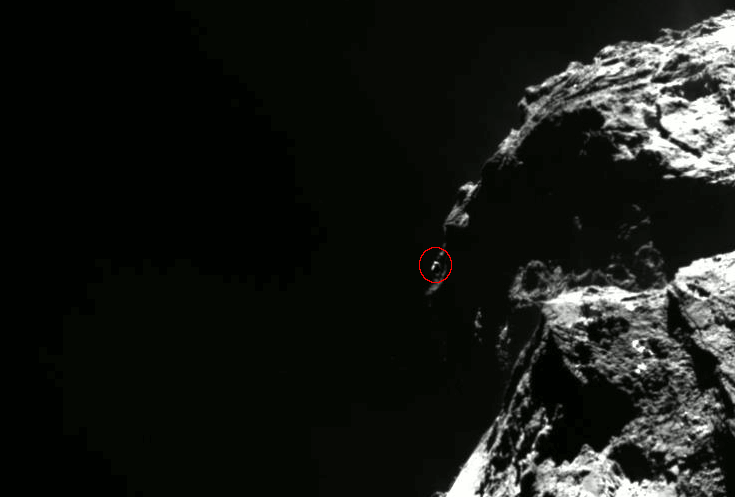
Sequence of images showing a boulder-sized object close to the nucleus. They were taken with the OSIRIS narrow-angle camera on 30 July 2015. (Click through to see the full animated .gif). Credits: ESA/Rosetta/MPS for OSIRIS Team MPS/UPD/LAM/IAA/SSO/INTA/UPM/DASP/IDA
Monitoring the comet’s changing environment in the lead up to, during and after perihelion is one of the primary long-term science goals of the mission.
Over the last few months, seasons on the comet have changed, throwing its southern hemisphere into a short – about 10 month – summer after more than five-and-a-half years in darkness. This has revealed parts of the surface that have previously been cast in shadow during Rosetta’s sojourn at the comet, allowing scientists to fill in some of the missing pieces of its regional map.
They have now identified four new geological regions on the southern hemisphere, which includes parts of both comet lobes, bringing the total number of regions to 23. The names of the new regions follow the naming convention of Egyptian gods and goddesses adopted for the comet: Anhur, Khonsu, Sobek and Wosret.
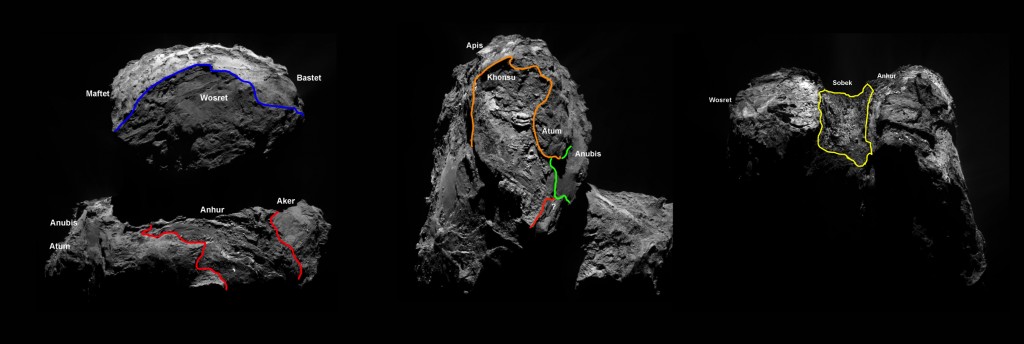
The new regions identified on the southern hemisphere of 67P/C-G. Credit: ESA/Rosetta/MPS for OSIRIS Team MPS/UPD/LAM/IAA/SSO/INTA/UPM/DASP/IDA
The comet’s average temperature has also been on the increase. Not long after arriving, surface temperatures of around –70ºC were recorded. By April–May 2015, this had risen to only a few degrees below zero celsius, and now highs of a few tens of degrees above zero are forecast for the next month.
Meanwhile, astronomers back on Earth have been following the comet’s evolution from afar. Rosetta is far too close to the comet to see its growing tail, but images collected over the past few months with telescopes across the world show that it already extends more than 120 000 km.
A lop-sided coma, with a notable high-density region away from the main tail, was revealed in various images, including some taken last week from the Gemini-North telescope on Mauna Kea, Hawaii.
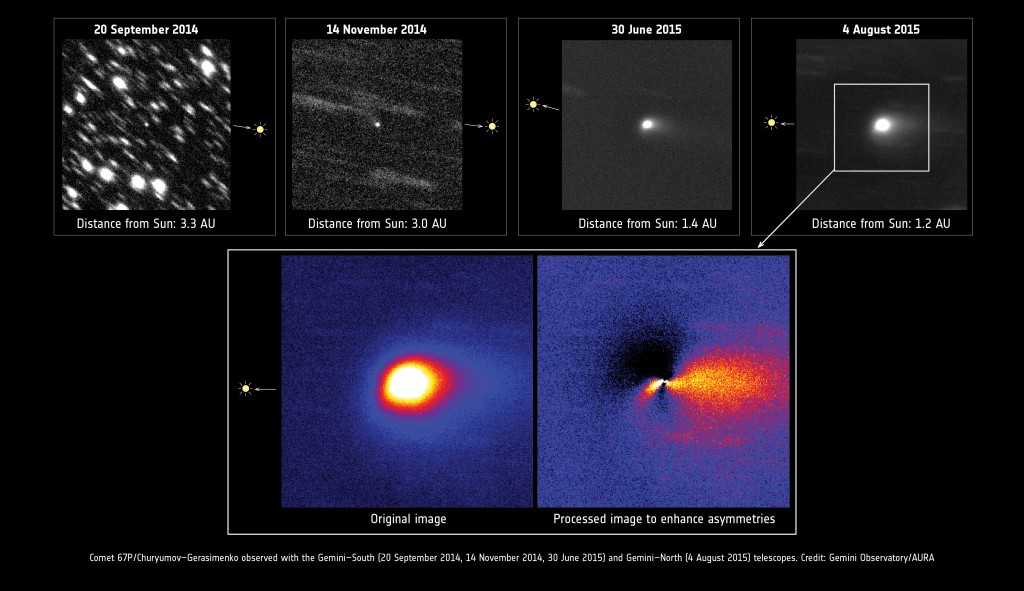
Ground-based images of the comet from the Gemini Observatory taken over the past year. The image taken on 4 August 2015, which is also showed in a zoomed and enhanced version below, reveals some asymmetries in the comet’s tail. Credits: Gemini Observatory/AURA
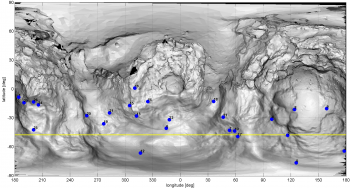
Projected map of Comet 67P/C-G based on OSIRIS data. The map uses a cylindrical projection, with the small lobe shown at the centre of the map and portions of the large lobe to the left and right. The blue points refer to possible origins, on the surface of the comet, of some of the dust jets recently observed by OSIRIS, while the yellow line indicates the sub-solar line. Credits: ESA/Rosetta/MPS for OSIRIS Team MPS/UPD/LAM/IAA/SSO/INTA/UPM/DASP/IDA
“Combining these big-picture views from ground-based telescopes with Rosetta’s close-up study of individual jets and outbursts will help us to understand the processes at work on the comet’s surface as it approaches the Sun,” adds Nicolas.
“We aim to go back in much closer again after the activity subsides and make a survey of how the comet has changed. We also continue to hope that Philae will be able to resume its scientific operations on the surface and give us a detailed look at changes which may be occurring immediately surrounding its landing site.”
Finally, Patrick Martin, ESA’s Rosetta mission manager remarks: “It’s exciting to reach the milestone of perihelion, and we look forward to seeing how this amazing comet behaves as we move away from the Sun with it over the coming year.”
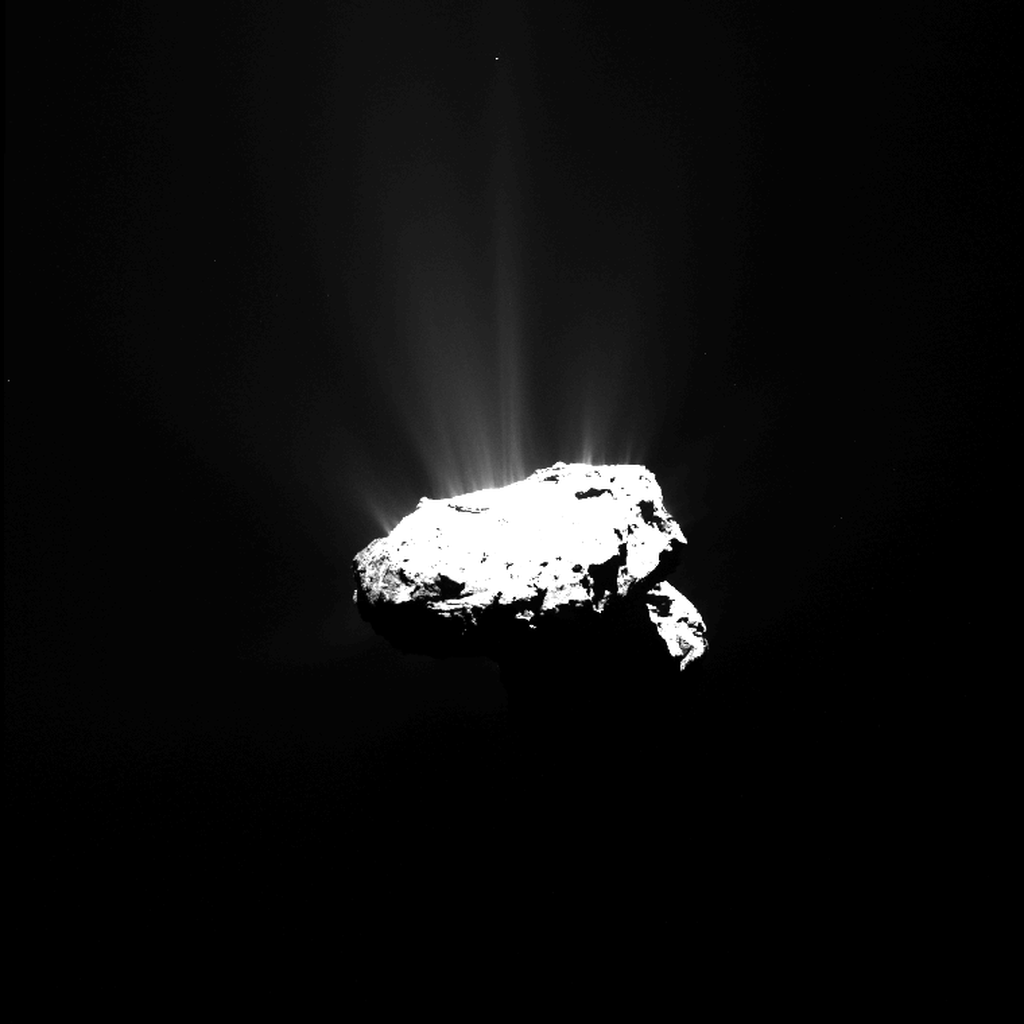
OSIRIS NAC image of Comet 67P/C-G taken on 12 August 2015 at 14:07 GMT. Credits: ESA/Rosetta/MPS for OSIRIS Team MPS/UPD/LAM/IAA/SSO/INTA/UPM/DASP/IDA

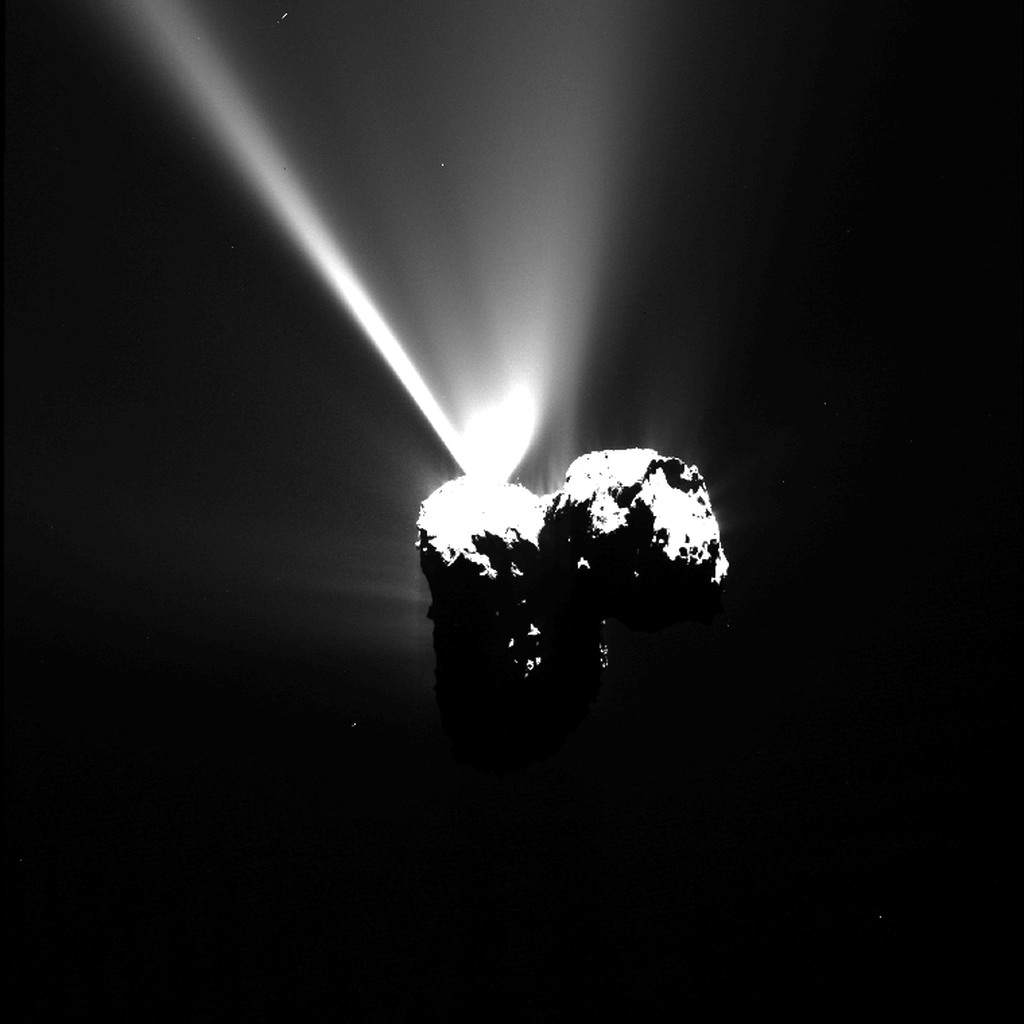
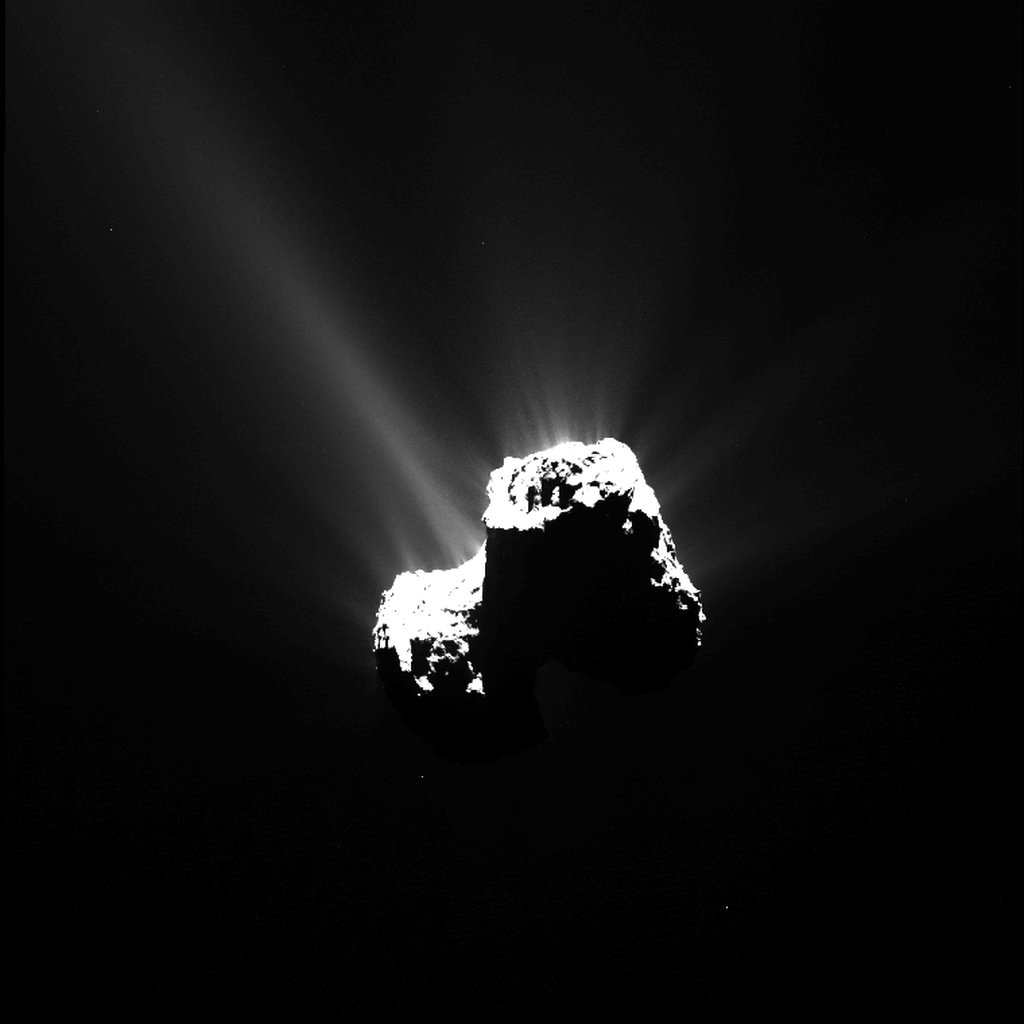
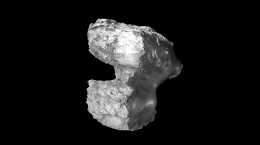
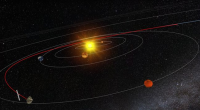
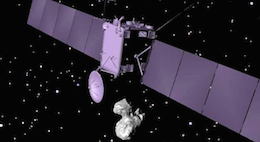


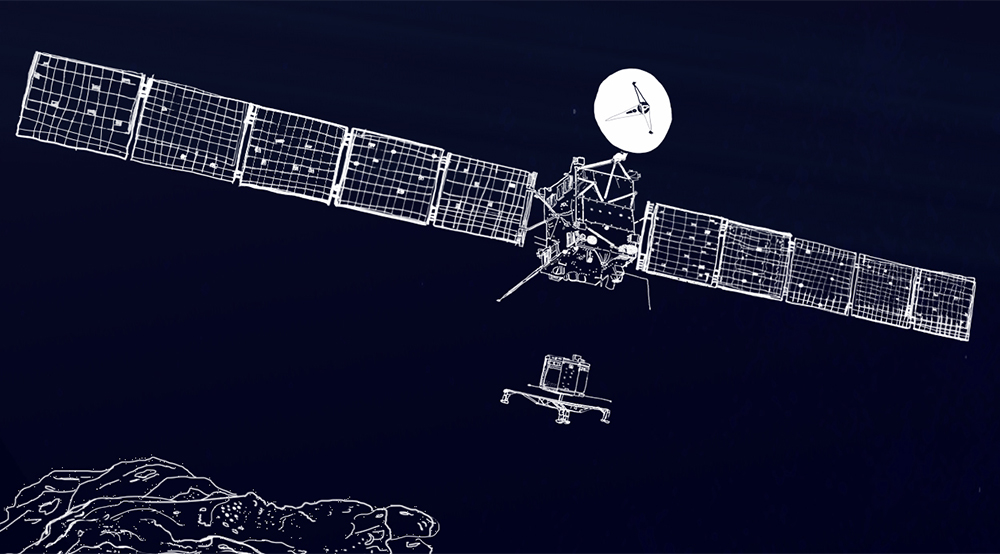
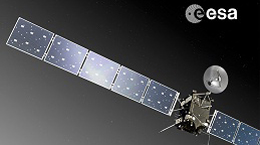
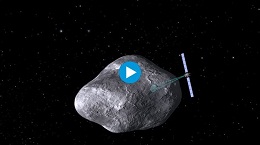
Discussion: 72 comments
Slight tropic line neck carving. Very beautiful and highly informative the GIF. Thanks a lot Claudia and OSIRIS Team.
astonishing! (great job for the techncian involved!!!!) it’s incredible what’s could mean a so small creature for the life on the earth, armonia between giant stars and the smallest thing should admit a wider horizon!
Pointing to the striking quadrature at top and bottom of 67P. Both with 5º declination respective to rotation axis.
https://www.esa.int/spaceinimages/Images/2015/08/Mapping_comet_jets
Logan
Am I right in thinking you mean the offsetting of the Hatmehit crater to the north of the xy rotation plane and Imhotep to the south of the rotation plane? It is true that they are offset by roughly similar amounts and in opposite directions although I wouldn’t say by 5°. More like 5° N for Hatmehit and 15° S for Imhotep. That’s why I’m wondering whether I’ve interpreted your comment correctly.
Anyway, I think I may have the answer to this offsetting either side of the rotation plane for these two areas. It could be to do with the line of the hypothesised paleo rotation plane. I’ve done a page, separate from my blog posts to illustrate this for you:
https://scute1133site.wordpress.com/paleo-rotation-plane-360-projection/
It has the cylindrical projection map that you link to and it’s annotated with the paleo rotation plane in brown dots. The paleo plane goes through the middle of both these areas instead of ‘awkwardly’ skirting to the north on one and to the south on the other. It’s as if the rotation plane has slipped from what was the exact long axis so as to compensate for mass loss. The paleo plane would have been on the long axis by definition if the comet had stretched along the axis of rotation and the paleo comet with its extra mass in place (slabs and head lobe slice) would have been a very symmetrical object either side of the rotation plane as a result. This would mean the paleo plane would go right through the centre of Hatmehit and Imhotep, as it does in the annotated picture.
I should make it clear that the paleo line, as depicted, is based solely on the stretch signatures that run in a line around the comet. That line was traced wherever it happened to go, whether meandering or straight, without any reference to the bigger picture. But it just so happens to go straight round the long axis and give rise to the arguments made above.
In the comment above, I said “hypothesised paleo rotation plane” because it’s my hypothesis. I should also have used the adjective, ‘hypothesised’ for the missing slabs, the head lobe slice and the stretch signatures. That’s because they are also part of my hypothesis. On rereading the comment, it looked as though these phenomena might have been established by the Rosetta scientists and therefore be widely accepted in the scientific community.
Hi Cooper. Among other geometries, Ducky exhibits hints of quadratures:
https://blogs.esa.int/rosetta/2014/12/05/cometwatch-2-december/
Layering of
https://blogs.esa.int/rosetta/files/2015/04/ESA_Rosetta_NavCam_20150415.jpg
Could be perspective or illumination, now the cylindrical projection seems to show some at both top and bottom of Ducky.
Following with great interest your ‘slab’ argumentation.
Those trackers are really doing a very good job.
Not only the optic quest, but also the lack of stillness on the orbiter mainframe.
Becoming evident additional navigational attitude tracking technologies needed.
https://www.esa.int/spaceinimages/Images/2015/08/Comet_s_dusty_environment
“The dust environment around the comet, providing a the challenging environment for the spacecraft to operate. Images captured on 6 July 2015 with the OSIRIS wide-angle camera.”
Can we not have a look at what the Star Tracker would see. and not OSIRIS?
Are we to assume therefore that Rosetta is both too far away and too busy to attempt further communication with Philae for a few weeks?
Great pictures and a very informative text!Thank you very much,it`s amazing!
Thanks Claudia. Still outgassing like mad, even at perihelion. Contrary to some rather dodgy and ill defined predictions. Amazing that there is a diamagnetic cavity, and yet there is either (depending on the day of the week) an unobserved electric current from the Sun (electric currents cause magnetic fields; astrophysics 101), or a gargantuan increase in the solar wind. Which carries a magnetic field. Weird isn’t it. Wonder what can be causing all this outgassing? Must be magic. Or sublimation. Like every scientifically literate person has known for a long time.
Still, what do scientists know? 🙂
Thank-you for the great images, interpretation, and commentary!
I have a technical question on spacecraft operations. Why does the spacecraft use stars rather than the sun and the planets to determine its orientation? I would expect them to be much brighter and easier to distinguish in the comet environment.
In case that none of the technicians answers: You need at least two uniquely identified objects. Using the Sun and planets is difficult for the same optics due to different brightness over many orders of magnitude. The positions of the planets and the Sun are changing, and not matchable to a fixed map, difficult for low computer power (special radiation-hardened computers are needed, and Rosetta was designed in the 1990s). Angles between planets can be large, such that they aren’t visible within one image.
Taking an image in an arbitrary direction (avoiding the Sun and the comet) always shows stars with matchable patterns. One image is sufficient to determine the spacecraft attitude.
Using many small objects (stars) improves the accuracy of the measurement in comparison to the somewhat fuzzy Sun.
How do you know from a point light source, that it is a particular planet? For unique identification you need some context.
… at the end using brighter objects, like the Sun or Jupiter, are easier to see through the dust, but need additional information, and pose other technical problems.
67P would be a bright landmark, too, but it’s expensive to process on the spacecraft.
Just to add to that explanation.
At any given moment the spacecraft needs to point in some specific direction, to do whatever it needs to do; take photographs, point its high gain antenna at earth.
Any practical optical navigation system has a limited field of view; so unless you put it on a mechanically steerable gimbal – lots of power/accuracy/reliability issues – the chances the tracker would have the sun or a planet in view are small. As Gerald says, you always have an identifiable star field.
Work on solar trackers has been done. There is an extra problem that on this scale the sun is *big* and has slightly fuzzy edges, whereas a star is just a point, easier to locate accurately.
Hi esseffgee,
while the Sun and planets are bright sources, they represent only a couple handful sources scattered across the sky. The field of view of the star trackers points to a limited portion of the sky (16.4 deg x 16.4 deg) so it would be problematic to rely on the position of Sun and planets only. Instead, by using the stars, one has many more reference points virtually across the entire sky.
Rosetta’s star trackers use some 3900 stars from the Hipparcos catalogue, which is based on data from ESA’s first astrometric mission.
You can read more about the star trackers in this paper:
https://articles.adsabs.harvard.edu//full/2000ESASP.425..279B/0000279.000.html
Best wishes
Gerald, Harvey, Claudia,
Thank-you so much for your helpful explanations. I wonder what one might design today, with what we now know about the comet environment and with current technology. I am of course thrilled and impressed with the bird and how it is being flown! It is a truly impressive success, as science, as adventure and as exploration.
Future space trackers’ designers could be considering thermal maps. Main objective being keeping attitude derive at bay. Micro-sensor could be thermo-pair cooled,
Also future stabilizing loop tech could be -someway- evolved to work while orbiter’s mainframe still on oscillatory mode. [By the moment oscillation is about to be dampened, another hit -another wait- so, code execution blocking].
Maybe future ROSETTA could include ‘hawkish’ fly-by-ers with omni-comm, adequately hardened for the environment.
Asking pardon for some repetitive ideas. Just trying to re-word them.
Wait, that’s not a boulder, that’s Philae saying “Adios Muchachas!”
Seriously though, in today’s Hangout, Barbara Cozzoni felt Philae could not be blown off the comet by a jet, but that boulder is at least several meters and is said to be past escape velocity.
Thanks so much all of you on the team, such exciting times!
I do Have a question for the mathematically inclined. How does such a big Boulder get enough force times distance to accelerate it past escape velocity from the surface in a vacuum?
A subsurface explosive outgassing event could only accelerate something for a few centimetres while air pressure of the explosion can keep a pressure differential going before it dissipates. Such a huge force that could accelerate such a massive boulder to escape velocity in such a short distance would also be enough force to obliterate the boulder.
The same argument that calculates the unlikeliness of Philae being ejected should also rule out such a big Boulder as even 4 metres diameter..
Take a cube of density 1000 kg/m³ of 10m x 10m x 10m, hence mass 1,000,000 kg, an acceleration along 10m (length of the edge of the cube), a pressure of 5 mbar = 500 Pa = 500 N/m² = 500 kg((ms²) acting on one of its sides of area 100m². Mechnism like an airgun.
You get a velocity of 1 m/s:
The force acting on the cube during acceleration is pressure times area = 500 N/m² x 100m² = 50,000 N.
The energy gain during acceleration is E = F s = 50,000 N x 10 m = 500,000 J.
Kinetic energy is m v² / 2, hence v = sqrt(2 E/m) = sqrt(2 x 500,000 J / 1,000,000 kg) = sqrt(1 J/kg) = 1 sqrt(J/kg) = 1 sqrt(m N/ kg) = 1 sqrt(m kg m/s² / kg) = 1 sqrt(m²/s²) = 1 m/s.
Hi Gerald,
Is it realistic for a sustained pressure to be exerted for a full ten metres at such slow speeds, ie for 15 seconds plus?
Hi Marco, yes it is realistic. Not necessarily in the simplified form I’ve described, but it’s essentially the same physics. Take a larger cavern, hence a larger area which is lifted off. Parts will be ejected, parts will fall back to the comet.
We’ll likely see larger surface changes from the event than just of the size of the ejected boulder.
The numbers I’ve used are close to an upper limit estimate. The boulder may have been smaller and less dense. So you need less pressure, maybe 100 Pa. Unless there are large openings, such a pressure can be sustained for several seconds. The pressure difference would correspond to maybe 10 meters height difference.in the Earth atmosphere, but not more than 40 m (for 500 Pa).
Hi Gerald,
There is a distinct problem with this, and I am not sure why you do not see it.
With an air gun, which you used as an analogy, the pellet has a barrel (ie. A tunnel) that sustains the air pressure differential behind the pellet for the full time and distance required to accelerate the pellet. This is also to guide the direction of the pellet, aided by rifling which imparts spin – these two factors are not important in the example of 67P but the first factor is. The air pressure differential needs to be sustained for the large Boulder for the full 15 seconds AND the full 10 metres or so of acceleration. If the boulder is sitting on or just under the surface, after 2 seconds or 1 metre of acceleration, the boulder has moved from its partly sealed position allowing a rush of air exposed to a vacuum with a likely one metre extra opening for it to instantly escape.
This is like putting the cannonball wedged at the end of the cannon and making the same calculation of energy etc. to see how fast it would travel as you would loading the cannonball in the normal way.
Can you not see this argument? The boulder needs a tunnel to sustain the impulse with respect to the inconvenient sucking of the vacuum which explosively releases any pressure to space rather than solid objects. A similar argument can be made for even sub metre fragments that are flying off 67P.
Hi Marco,
I can of course see the argument, but it’s neither relevant for the physics of the acceleration, nor for the quantitative estimate. Take a bursting bubble as another analog, if you don’t like the cannon ball analog.
We’ve no close-up images to tell exactly the size of the disrupted area, or the possible collisions and interactions between the involved fragments.
We’ve just seen this one fragment, therefore I’ve constrained the physics to this fragment, and kept it as simple as possible.
… I should add: The boulder doesn’t sit on top of the surface, it forms instead as a fragment by the disruption of the surface.
Hi Gerald,
Don’t get me wrong, I love the cannonball analogy – you are just “loading” it wrong. The fragment must start at the bottom of a crack/tunnel say 50m deep. A BLEVE explosion would be the “gunpowder” – handy because the liquid would be stuck to the underside of the fragment, turning it into a rocket powered mortar shell. A small breach would expose the liquid to the vacuum, and an explosion would ensue under the fragment, propelling it upwards on its way out of the crack/tunnel allowing it to escape gravity.
The bubble bursting analogy doesn’t work at all. It requires a gum like substance to maintain the pressure seal while the fragment starts to move.
Hi Marco, take fluffy dust and snow as “gum-like substance” for the bubble bursting analogy, to seal fractures up to some size.
… the issue with the BLEVE is: it woudn’t stop after the boulder is ejected, unless there is just a small supply of liquids, since the opening would get larger by the ejction event, with bad cards for less volatile materials to close the hole rapidly. Sublimating ices are more benign than boiling liquids after exposed to the vacuum.
Hi Gerald,
Your two comments are almost contradictory. I feel they cannot both be correct.
Fluffy dust and snow will be less resistance than the boulder, thus will not hold a seal without actually being stretchy and sealant in the way rubber is. In other words, the pressure will push the dust and snow and gas and vacuum, instantly bursting any bubble that might otherwise help, that isn’t made of “contiguous rubber”
Obviously the supply of liquids is locally limited. Whatever barrier is holding pressure at the surface (you mention snow and dust could hold a temporary barrier) , is separating various liquids with “dissolved” substances in colloidal form, including all the stuff that deep impact made a comet spew out. There is definitely a nonhomogeneity of substance. This will both limit a BLEVE explosion and make them quite common with every surface breach.
Also, even for supervolatiles- how do they warm up quickly under 10 metres of insulating material enough to explosively evaporate?
Hi Marco, the supervolatiles don’t warm quickly. They accumulate deep subsurface due to seasonal heating of the surrounding material over weeks or months.
The shallow subsurface ices may soften rapidly by short-term solar heating and trigger the event.
See my post further down – I think we ‘crossed in moderation’ so to speak. Interesting we used very similar example figures.
Yes, I’ve seen your post soon after submitting mine.
The 10m cube is easy to calculate, and a reasonable upper size estimate.
Your calculations show, that the energy conversion process from solar heat to kinetic energy doesn’t need to be very efficient to explain the event.
They spoted Philae being ejected from the comet ! 🙂 (unfortunately this might have happened)
The Joys of Perihelion
The time period before and after perihelion is a very special time, as the comet is being heated by the Sun., and as it warms, it de-gasses and produces dust, various gases and exhibits other activity. Since there is a time-lag for the heat to soak into the comet, the period after perihelion is generally a time when the comet becomes very active and quite unpredictable.
This post-perihelion period is the most surprising time with comets– traditionally you expect to see increases in activity and unexpected catastrophic outbursts. The thermal stresses build up in the comet and the nucleus may collapse in a landslide or even break apart or if the comet is a two-piece contact binary the parts may shift and settle in a new configuration. The net effect of this rearrangement is that the comet surface is no longer an insulating shell of dust or a porous, friable material much akin to a Shuttle heat tile and this movement will expose fresh cold and icy interior surfaces to insolation and heating, resulting in an increase in sublimation, degassing and gas flow with entrained dust into the coma.
The nature of the activity may become somewhat cataclysmic at perihelion. Thus far the processes we have seen have been relatively gentle “subtle”. As the interior warmth increases, there may be some somewhat less subtle process that goes BANG. There are simply too many large boulders, aeolian dust flows and Maar-like craters scattered about the surface to be caused by “subtle” processes.
The ice in the comet is a crystalline or amorphous water ice with various atomic, molecular, and organic gases or compounds involved with the clathrate lattice. We don’t know much about the energy wrapped up in large quantities of cryo-clathrates with involved gases but I have seen suggestions that at critical temperatures the clathrate-gas lattice will undergo drastic structural changes resulting in a volume change or energy release, much like with decomposition explosives. We have noted the active pits in the Seth region and the large craters or calderas at Imhotep or at Hatamehit, and for the most part we have seen very gentle and subtle degassing and dust jets in these areas. But can “subtle” account for the size and number of these structures? These may very well be result of the decomposition of a clathrate when a critical temperature is reached. I do know of much research with volcanic Maar-diatreme structures, but there has not been much done in the context of cometary Maar structures. AFAIK, I think that “maar” is a appropriate use of the term with cometary processes.
–Bill
I agree Bill. It has been clear for some time now that the material of the comet is a mixture of many volatiles, super volatiles, organics and dust. I think at one time I suggested it should be classed as a new mineral. Its phases, structure, mechanical and thermal behaviour is completely unknown and as a result BIG surprises could be around the corner. Processes dissipating a lot of energy have created the topography we see. Erosion processes we have heard about, soften the edges and slowly modify the appearance, but they are just not dynamic enough to make this landscape.
The surface organics/dust layer is a highly efficient insulator, the sintered ices just below it create a near gas impermeable layer. It makes sense that a lot of thermal energy in the form of pressurised gases and supercritical phases, can be trapped beneath them. Once those layers are thinned or removed by sublimation of near the surface volatiles, the potential is there for the explosive release of that energy. Shake a bottle of fizzy drink, the consequences are only visible when you remove the cap.
Robin, why supercritical phases? For all the known constituents reaching the critical point seems very improbable.
As to the rest, agreed.
Make that bottle near to freeze, then open it. There’s a ‘first gassy, second fizzy ice volcano’ sticky by the way 😉
Interesting. Comet ison disintegrated before it reached the Roche limit, though no doubt the stresses were a lot greater so close to the Sun. What would you do if 67P did actually break into two? Which piece would Rosetta follow? Would the sudden outpouring of gas and dust force a retreat, and how long would that last? Would the presence of Philae influence your decision?
So well written, Bill, with deep sincerity, you bring science and illustrative prose to a crescendo, just before the main course is served. I am all ears, eyes and taste buds!
Why increase the contrast from the original shown last night during the live feed?
It was awesome, now it’s just meh another jet picture.
🙁 Sad face
On the gif, we can see for a brief instance a planet? Which planet would that be ? Is it Mars ?
Here is a listing of .PDF papers on various cometary processes:
https://www.unmannedspaceflight.com/index.php?showtopic=7935&pid=225366&st=285&#entry225366
–Bill
Thanks a lot, Bill 🙂
Fantastic photo! Big energy forces at work. Makes one wonder that if Philae had actually been located any where nearby, if one of those outbound specs could have been it.
As usual, more musings. What’s pictured is no wispy jet. This is a huge dust beam. I tried to estimate its approximate width, and judged that it must be at least 300 meters. Some of the pits are apparently that big in diameter, so perhaps that’s what’s responsible. But there’s still no plausible, detailed explanation of how a pit, or any other cometary feature, could produce a huge, compact beam of fast traveling dust. It’s like a murder mystery where everyone agrees who the suspect is (sublimation), but despite a lot of information and clues, no one can explain how they did it.
The other standout question mark is the intense dust billow or cloud. Is the obvious curve of the right edge a visual effect of dust that in actuality is traveling in a straight line, and if so, can someone explain the visual effect? Or, is the dust actually curving, and if so, can someone provide a plausible explanation of how that’s happening?
It will be fascinating to compare OSIRIS images of that area before\after – assuming they can be taken after activity dies down.
I wonder if a new pit will have appeared there?
Surely the curve could be just the effect of a time-varying rate of dust emission; your eye sees a contour of constant intensity of scattered light, so a fairly rapid increae/decrease leads to a curve viewed side on.
Perhaps there will indeed be a new pit there, but there seem to be many many more jets being observed than pits to explain them. In fact, finding consistent and similar surface features that could explain the very consistent and similar jets is as illusive as finding the ever illusive ice. And isn’t it rather strange to have all these very similar columnized jets originating from such extremely diverse surface features? Sort of like having all the instruments in an orchestra somehow producing the same exact sound. Sublimation is indeed a mystical and wondrous force, mythical even.
If I’m reading your visual effect explanation correctly, the slower moving material would be toward the bottom and faster moving higher up if we’re viewing things from the side. However, this means the movement of the material would also have to be angling from left to right, which is unlikely as all the surrounding dust is pretty obviously heading up. That’s a pretty radical curve to be attributed to a visual effect, but I can see why your belief system would greatly favor a visual effect explanation. Curving dust like this would be uncomfortable to sublimation theory, and might even suggest (ee gads!) some kind of pulling force.
The velocity doesn’t need to change, just the dust density.
For constant velocity, as the dust density increases the jet will appear to widen for example. Everything can still be travelling in straight lines.
If the velocity is changing that complicates things further, and you could get ‘bunching’ effects like those in electron beams I suppose. But if one postulates a high initial velocity which reduces, explosive like, those don’t occur.
But as I’ve often said, what’s going on in detail is pretty weird!
The only thing I’m adamant about is there is only one credible energy source for all this; all other bets are off.
It IS pretty dang weird, isn’t it? Nice to hear a scientist using a word I can easily understand and identify with, lol. Tendency seems to be to either normalize (rationalize) or just ignore many of the details and implications for the different theories/models, but each seems to be belied by the details and implications to a pretty large extent.
One thing is pretty clear though…here we have boots on the ground so to speak, all kinds of on location instruments, data, photos, etc, and even after close to a year now there’s been nothing but continuous surprises and head scratching and speculation over this comet, something that should be one of the most simple, familiar, straightforward objects in the universe. Given the magnitude of uncertainties that remain about P67, it really makes me wonder about all those things that are stated as fact with such certainty about the rest of the universe, about all the things that are unimaginably distant and more complex and where we are limited to earthbound, or earth orbit, instruments that are not only not on location, but 100’s to millions of light years away. Applies double to speculating about things in past, where (when) we have no instruments to measure at all (and yes, I know, we are looking at the past in the cosmos, but you know what I mean). How many other things that are “well understood” would become increasingly more mysterious, not less, the closer we got to them?
Xx Capta issues again.
Sovereign Slave.
I think this varies very much by the class of object.
There are some things where I think the basic physics and the observations agree very well, and we probably do understand them pretty well. There may well be a lot of surprises in the detail, there might be the odd case where some radically different explanation fits, but broadly, for some types of things, we mostly have the basics right I suspect. This would include a lot of stellar objects, gas clouds and the like I think.
For more ‘exotic’ objects in particular, I’m more inclined to regard the explanations as a current best guess, though some look firmer than others. More extensive revisions would not surprise me at all, and generally we’ve not been able to observe much ‘detail’.
67P is kind of a mixed bag. There is much going on that broadly speaking *does* fit pretty well with what was expected. The plasma physics, give or take an overlooked mechanism, for example has not thrown up big surprises.
Despite all the nonsense we see here, the molecular coma species, the general behaviour as the thermal input scales up etc are all ‘reasonable’. Even the famous ‘duck’ shape, the dark colour, the low density, had all been seen before.
The ‘weirdness’ lies primarily in the detailed way that solar input energy couples to the formation of the terrain, whose details certainly were unexpected, and whose formation mechanisms remain to me at least (despite the certainties of some here) obscure and up for grabs. But there simply is no other mechanism that’s been proposed to date other than thermal input that satisfies the laws of physics and has the right order of magnitude. Of course one can’t utterly rule out some wildly unexpected explanation that does fit those constraints (which some here don’t worry about!) but I think it’s more likely we will figure out how thermal input couples to the strange material 67P is made of to generate the topography.
Or we may not, in which case hopefully someone funds Rosetta (II)!
(Some of the pet theories here whilst not utterly ruled out seem rather implausible to me, but I’ve an open mind on them. They need far more detailed analysis.)
One thing occurs to me, Harvey. You advocate a fairly mundane energy source, thermal, which seems to require that P67 have rather unusual, even extraordinary properties. EU advocates a rather mundane comet composed of ordinary materials, but requires a rather unusual, even extraordinary energy source.
Hi Harvey, Sovereign Slave:
“Tendency seems to be to either normalize (rationalize) or just ignore many of the details and implications for the different theories/models”. A model is a simplification of reality, lots of detail and implications have to be erased. It’s the only way we can ‘grab’ the panorama of an infinitely complex reality, trough modeling.
“…but each seems to be belied by the details and implications to a pretty large extent. ” Indeed there is a need of integration, ‘holism’ which also goes with the need to keep the mental ‘library’ small and manageable. A taste is evolved for models that favor this. On confronting with new, conflicting data an colleagues’ perspectives, taste has to be ignored.
“… it really makes me wonder about all those things that are stated as fact with such certainty about the rest of the universe…”. Nothing is permanent, not even science. Contrary to what popularization of science seems to say, science is human, build to fit our minds and circumstances. Even evolution of language forces science to re-word their ‘facts’. Scholastic dogmatism stills permeates basic education, and that is very wrong.
SS, Danny: Why should a comet be “simple” ? If it were simple it would not be worthwhile to spend a billion euros to send a probe to it. We could just figure out everything we needed sitting in our armchairs.
Why should science be “built to fit our minds” ? I work in a very tiny area of science and there are thousands of papers written in my area which I do not know of. Collective human knowledge can be vastly more than a single individual can master.
Collective perception of humans does change with time. At one point it was thought that the heavens are mysterious and complicated and you need scientists who know their epicycles to compute the positions of planets. Now one look at a mobile app can tell you where the planets are.
Maybe some day you could look up your mobile to see what 67P is doing today, but we are a bit far from that.
Actually, it would be interesting to try and estimate what energy is involved.
It’s tempted to see ‘a big explosion’ .
But it takes very little energy to escape 67P, and actually very little mass of dust as a fine particulate to generate strong scatter.
So in fact the energy may be really quite small.
You do, on 67P, get a Big Bang for your bucks as they say.
Actually, one can take a *wild flying stab* at it, at least a very rough idea of scale.
Say we took a ten metre cubed cavity, full of water vapour at its SVP at zero C which is 611Pa.
Now E=P*V and in SI units we get Joules, so that cavity has about 611kJ in stored pressure energy if full of water vapour at its SVP at zero C.
So order mega joule.
For comparison, TNT has just over 4kJ/gram, so the cavity is the equivalent of ~~150g of TNT, around the scale of a hand grenade.
This purely gives a *very, very rough* idea of what scale we might be talking of. It suggests probably in the mega joule rather than kJ or GJ region, if this was driven by explosive pressure release.
If you speculated it was CO or CO2 then the pressure could be a lot higher – but it’s unlikely the cavity could withstand really big pressures.
With solar radiation at around a kW/m^2, and low albedo, there is no shortage of thermal energy to provide this in a short length of time. The ten by ten metre surface area gets a MJ in ~ ten seconds.
It is not the shortage of energy that is the problem Harvey. It is the shortage of ice.
20% ices by mass – about the observed ratio – should be sufficient.
OOn mind ‘experimenting’ stumbled upon this: Fractioning of the particulate trough fluidization [with gases] is a self-cleaning process. Not the case with seismic fractioning, it will tend to ‘clog’ the gas outflow.
Long time no see, and i missed not much as it seames. This mission is about to fade away. Phlilae is crippled, picture mania as usual, not Science facts of essence. I leave you again for a few month and check if its still all the same later this year.
What about Philae´s health? Is it awake?. Is there any hope to hear about it, after last week´s aproach to the sun?.
There is still hope. The closest approach to the Sun has still been more than the distace of the Earth from the Sun. Philae should be protected sufficiently from the intense Sun.
The main issue is communication from Philae to Rosetta. Without new data one can only guess about Philae’s health.
So, to be clear I mean a 10*10*10m=1000m^3 cavity.
What I wrote is ambiguous and could be read as 10m^3, sorry.
Harvey, if I remember correctly, the CONSERT data ruled out any “cavities” of this size, setting their maximum possible *diameter* at 2-3 metres (even if they exist at all). The required cavity you postulate would thus be between around 50 to 150 times larger than the acquired data allows for…
This is, of course, also a huge problem for any attempt to explain the July 29, the August 12 and the August 22 “outbursts” in terms of the explosive sublimation of hypothetical subsurface ices. Any equally hypothetical “cavities” required to store up the hypothesized high-pressure gases would necessarily be much too small to produce explosive events of this magnitude.
CONSERT data only exists for an *extremely* limited set of paths, sadly. Had a ten metre cavity existed in one of those paths yes, they should have seen it, but it’s a tiny sample. How long such cavities, if they exist, exist for is an open question.
I’m not wedded to any particular theory of how the surface evolves; collapsing cavities and explosive gas release, maybe, maybe we can think of other mechanisms.
However the energy storage of such a cavity, and the solar thermal energy input to it, are indeed credible.
Unlike competing ‘theories’ which have neither an energy input mechanism that makes sense, nor a source of the CO2, CO, H2O, if it’s solid rock, nor a way to accelerate it, because discharges don’t.
Even a ten metre cavity (which, as you concede, remains purely hypothetical given the acquired CONSERT data) would clearly be many orders of magnitude too small to provide the amount of supposedly compressed gases which was required to produce the explosive August 22 event, with its clearly visible 1.5 km diameter reaction zone at the nucleus’s surface.
The proposed mechanism is also confronted with the difficulty of explaining how the walls of such a cavity could possibly withstand the enormous pressure build-up required given that, according to the official version, the comet is supposed to be composed of a very loosely compacted mixture of dust and ice possessing a porosity of 75–85%. Such a build-up might be possible if the comet were made of dense material possessing high tensile strength (as I believe it is), but this possibility is ruled out in standard cometary thinking. They can’t eat their cake and have it…
The CONSERT data just covered a small volume, and you don’t kow the shape of the cavities. If the caverns are ramified, instead of roundish, you wouldn’t have seen them with CONSERT.
“Caverns” as on Earth? The sort that speleologists explore, in solid rock? I thought the comet was supposed to be composed of a very loosely compacted mixture of dust and ice possessing a porosity of 75–85%…. Don’t you see a slight problem here?
Hi Thomas,
I tend to agree with you. Although none of the outbursts were within the volume of 67P that CONSERT had managed to study, large enough cavities close enough to the surface are unlikely given CONSERT results, and at any rate, the mechanism has issues I had outlined above. Pushing massive objects from a standing start on the surface or near subsurface with pressure differentials just doesn’t happen with the vacuum of space sucking out the gas through the path of least resistance. The object has to be directly in the path of least resistance for the pressurised gas concerned for it to be pushed, and through the whole of the impulse as the object starts to move. I think it would have to be from the bottom of a crevice or tunnel.
Just a friendly reminder to all commenters to please keep comments relevant to the topic of the original post and, most importantly, to use respectful language when responding to other comments.
Any further comments submitted on an unrelated topic and/or deemed aggressive or unnecessarily rude will not be published. Please have a look at the blog house rules here: https://blogs.esa.int/rosetta/2015/01/06/happy-new-year/
Thanks for your co-operation!
What was the highest surface temperature ever measured anywhere on this comet? Anyone knows or is this a proprietary issue, after all it can be estimated but a measurement is better.
Have you calculated or estimated a thermal lag for 67P/C-G yet? We see it two ways here in the north – long term and short term. The short comes on a daily basis with the hottest part of the day taking place after noon (time of highest sun). Long term is more interesting and perhaps relevant to the mission. Here in AK, the warmest part of the year is some 6 weeks after the longest day of June 21. Works that way in the southern / southwestern US also.
With that in mind, I am thinking that perihelion activity will not start tailing off until well after the comet passes perihelion. Wondered if you guys had an estimate. Cheers –
Agimarc. You are correct, some lag is to be expected. To calculate it requires a knowledge of a parameter called the thermal diffusivity of the material it’s made of (which comes from the density, specific heat and thermal conductivity.)
Unfortunately we don’t know those parameters directly, though it can be estimated from the overall density, CONSERT data (limited as it is) and the gases leaving the comet etc. Data from how the surface temperature changes (from VIRTIS) as an area moves into shadow or sunlight might also help. One can also compare to other comets. There will be much analysis of this in progress for sure.
I’ve not seen a recent quantitative estimate, but a reasonable guess might be activity peaking a few weeks after perihelion I guess.